How To Choose Baseboard Styles (Ultimate Design Guide)
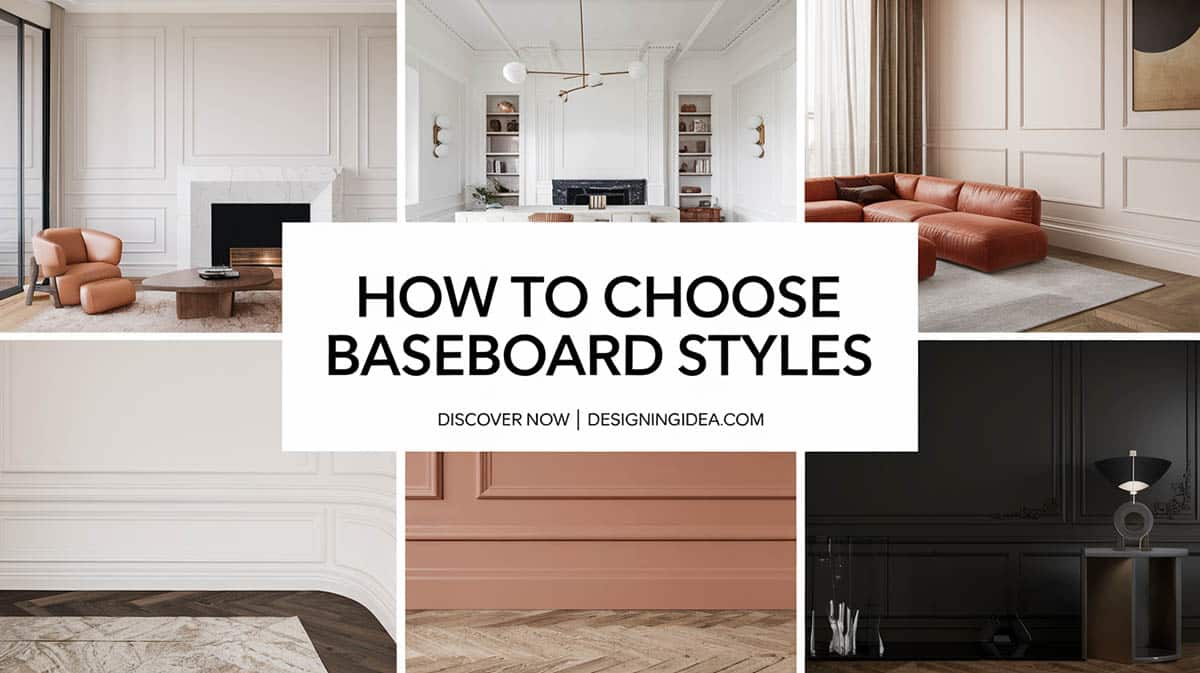
What is baseboard? Baseboard is a large category with many names; skirting board, skirting, mop-board, floor molding, and base molding; all of these names mean the same thing: the material on the bottom of the wall connecting to the floor. What is it for? Well, the baseboard is actually extremely useful, as well as adding a little extra visual interest to the home. The most important reason it exists is to cover the joints between the flooring and the walls. This will contain any leaks, hide any imperfections, avoid scratching things up, and avoid getting things stuck in the cracks and crevices that the two materials butting up against each other create.
On top of its need, the baseboard has become somewhat of a decorative piece as well. This decorative trim allows another means to add decorative accents and personality to a space that can subtly be carried throughout the entire room or building. There are a great deal of different types, styles, and selections that need to be sorted through before deciding on the right trim to use for the project. Some of the options, recommendations, and styling tips are below.
Types of Baseboard Molding
There are many shapes and sizes of baseboards, and each is used for different interior designs, whether decorative or functional. Some types of moldings can be combined, depending on desire and which types you select. For example, you could have a three inch rounded trim with an added quarter round along the bottom for protection.
Three-Inch Rounded & Stepped Baseboard

One of the most commonly used residential baseboards is the three inch rounded or stepped product. The top tapers off to give a softer, more decorative corner. While still mildly decorative, it is one of the less expensive options due to its popularity. This is most commonly used in a contemporary design but is simple enough to blend into almost any style.
Quarter Round Baseboard

Quarter round baseboard is in the shape of a quarter of a circle, hence the name. This is typically a very small circumference as it is a decorative piece used to hide any gaps between the trim and floor. The quarter round piece is an addition on the bottom outer edge and is referred to as a base shoe on occasion. Quarter round styles are made out of the same material as the rest of the trim piece, as it is an addition to it.
Slant Fin Baseboard
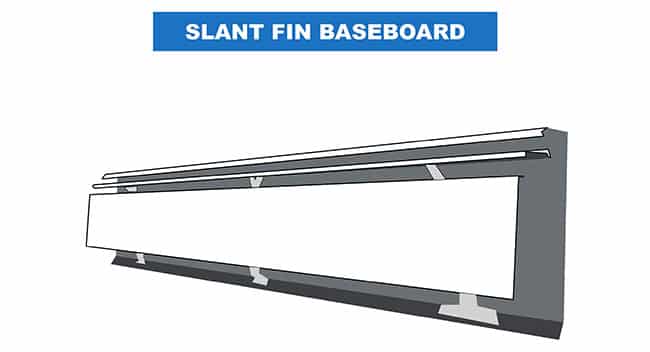
Slant Fin is a brand of baseboard that specializes in providing a register for heaters. These are great in both commercial and residential applications. This type, in particular, uses hot water to heat up a space. The slant fin product boils water to send through the pipes. These are an efficient heating source, sometimes even better than the central heating system.
There are certain requirements to get this type of heater in a location, though. Check for flooring and plumbing requirements before selecting this choice.
Baseboard with Rounded Corners aka Bullnose Baseboard
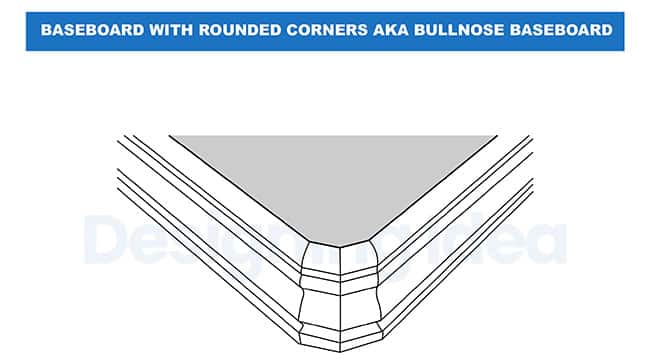
Baseboard with rounded corners are a fantastic addition to a home, especially if you are one of those who find yourself frequently stubbing your toe on the corners. This type of corner is known as a bullnose corner! Having rounded corners gives a softer look and can tie in with other rounded features in a space.
This also avoids having an unfinished edge. Round corners can save you and your items when bumping into it; instead of having a sharp corner that can scrape items or break skin, with rounded corners, you may only need to deal with a small bruise or bump! This style can be used in most different kinds of applications.
Square Baseboard aka Flat Style
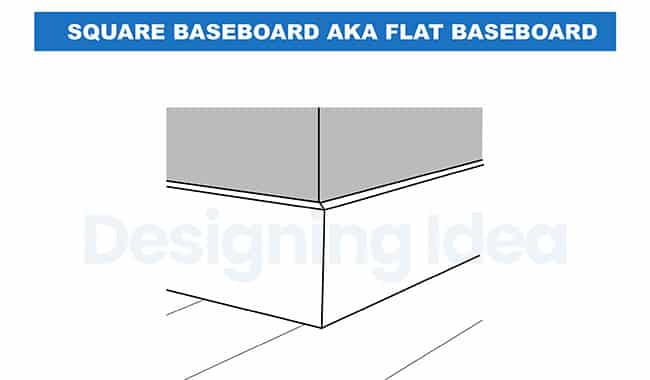
Square, or flat baseboard, is a more basic style that offers a sharp, clean look. This type is available in most materials and is good to be used when the rest of the moldings in the area are meant to be the focal point. This type has squared off corners, instead of the rounded ones mentioned above. This offers a more sophisticated look.
Baseboard Profiles
The profile of the baseboard is how it looks from the side, so basically, the height and shape of the trim itself. This is where you can get creative in how the wall looks. Some of the most typical options are as follows.
Back-Profiled Baseboard
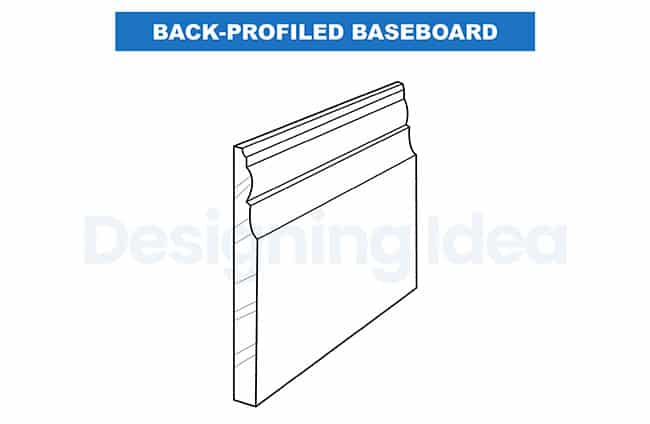
Back Profile baseboard is a technique that cuts out the back of the trim instead of the front. This is done so the trim can be placed over an existing piece and still lie flush to the wall. Back profiled products can either be used to cover old moldings without removing them or to reveal some in the back, still giving a stacked look.
Sculpted Mid-Height Baseboard Trim
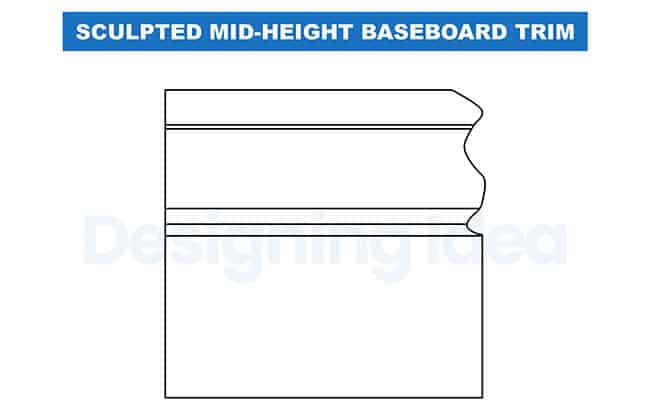
Sculpted Baseboard trim can be at multiple heights, including mid height and a taller version! The mid height sculpted molding is usually about 4 to 5 ½ inches tall and about 5/8” thick. The sculpted type is shaped in a decorative fashion with different accents like scallops or steps going back into the wall to add visual interest to the wall.
Tall Baseboard
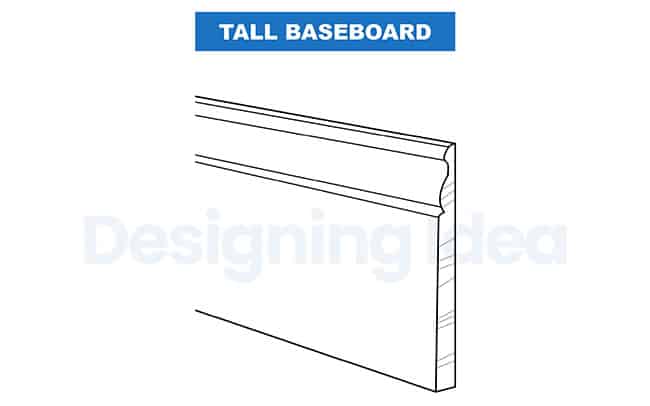
The taller version of the above mentioned sculpted baseboard trim runs about 5 inches to 7 inches tall and coordinates with the mid height version at 5/8 inches thick. This type of trim adds a more drastic accent to the wall board. This is like the sculpted mid height version with the scallops and steps that are included in the design. As the taller it is, the more material it uses, it also ups the price a little, making it more expensive than its shorter counterpart.
For areas with high ceilings or large square footage, this type of trim can be extremely important in keeping the proportions correct and not making it look tiny and out of place.
Baseboard Designs
Now, matching the style of your baseboards to the design of your home can be a little tricky after you factor in all the other things you have to consider. Below are a few examples and suggestions per some designs of homes.
Colonial Baseboard
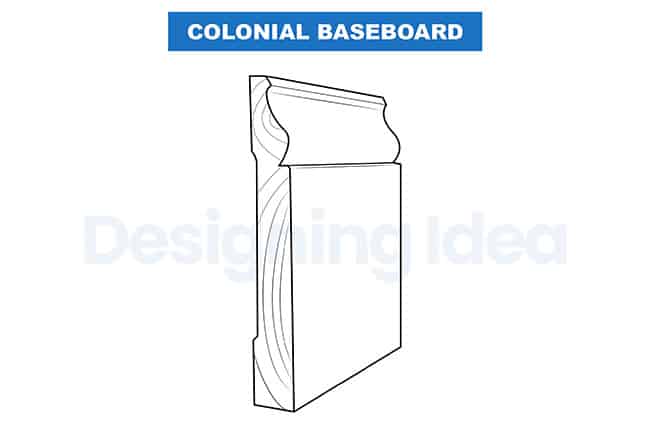
Colonial design is known to be quite classical and uses many decorative elements. Wood is the material to use, as that is what was available the time the style came to be. Heavy items with a lot of decoration were used throughout the homes, which is also relayed throughout the design of the baseboards.
Natural colors and not too much attention are brought to the walls in the colonial style. Often, white or natural wood is left. Crown molding and dado rails are popular in colonial design and are coordinated with the wall trim.
Modern Baseboards
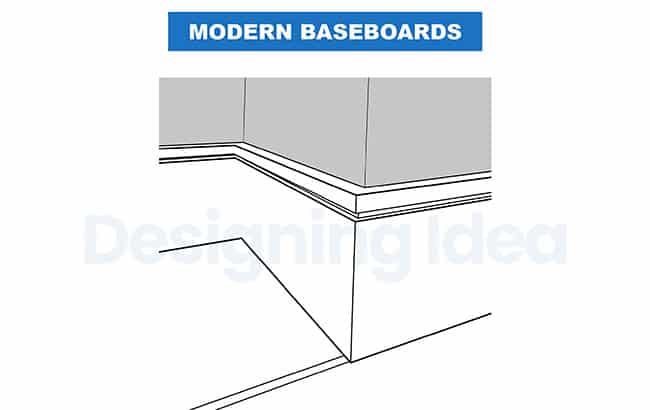
Modern design uses a majority of neutral colors and does not focus too much on baseboards in particular due to the minimalist nature of the style. This leads the trim to be of a similar color to the wall paint or something soft and white to keep it from standing out. As for the shape, to keep the modern design, it is recommended to find an extremely narrow base that does not have any decorative shape to it. This, again, fits with the minimalism of modern design.
For the more adventuresome, there are many modern baseboard styles coming out that feature a stepped design with straight edges. Another popular style is a recessed design where the actual form is set in the wall itself.
Craftsman Style Baseboard
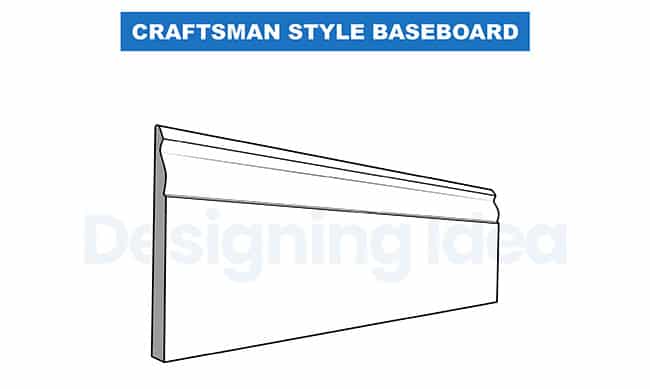
The craftsman style is, as the name suggests, all about the craftsman! This is where they get creative with the available materials. These handmade baseboards are a staple in craftsman-style homes due to the immense focus on built-ins, moldings, and millwork. Typically, these rustic pieces are of simple structure and are made of durable hardwood.
Farmhouse Baseboards
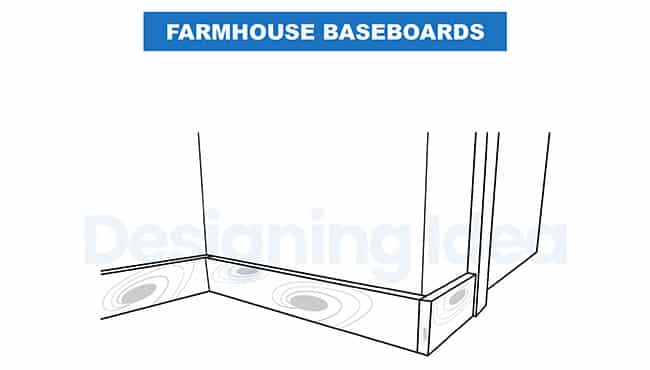
Farmhouse style baseboards leave the space gelling informal and traditional. Often, wood is the chosen material as the rest of the house is styled using this material. Crown molding and simple trim are common in the farmhouse design. In this style, you may find vibrant colors or whitewashed wood for wall trim to coordinate with the rest of the space.
These are all relatively within the budget as well since the simple design is preferred versus the elaborate designs and moldings that can increase the price.
Baseboard Material
There are a lot of options when it comes to choosing the material for the baseboards of your home, and lucky enough, most of these materials allow for any of the types, styles, and profiles that are discussed above. Bringing it down to the materials really hammers out the cost and installation method that are the next steps of the process.
Wood Baseboard
Wood baseboard is a beautiful and natural element that can be added to a home. This is one of the most high end choices, but with that comes a larger price tag compared to some options. Solid wood products typically run from $1 to $3 a sq. ft depending on the quality of the wood selected.
Selecting hardwood is good due to its ability to be stained any color and its being a natural and renewable resource. Most wood doesn’t come primed, which means there is a little more upfront work on it, but in the end, it can be worth it for a warm-feeling wood base.
Pine is a specific type of wood. This type is a great choice for a more budget-dependent project. Jointed pine is pre-treated and primed, which takes out knots, warping, and it also makes for easy installation due to the flexibility of the wood.
These baseboards have a lot of visible seams that some people do not like, so staining the wood dark can give a better illusion but cannot completely hide the joints in the trim.
These mentioned joints are glued together, which can contain harmful chemicals that one should watch out for. The price of jointed pine trim typically runs from about $1.50 to $3.00 per linear foot.
For pine products without the joints, it is a much lower price point of under a dollar per linear foot, but that comes without the ease and good qualities of the jointing. Oak is a more expensive wood, but is a great option when it comes to staining wood. This is an easily available product as well.
Having the ability to be stained lets it perfectly match the flooring or the wooden elements in the space. This adds a wonderfully cohesive look in the building or room.
MDF Baseboard
MDF stands for medium density fiberboard, which is what it is made of. MDF is one of the most basic forms or baseboard, but interest can be added by forming it into and profile and painting it the color of choice. MDF is typically painted since it does not have a wood grain to stain or whitewash.
This product is easy to use since it is soft and usually pre- primed, meaning an extra step a self-installer can avoid. MDF is also a well priced material, running about $0.65 to $0.90 per linear foot.
While MDF is a low budget and easy to use product, it is not as friendly to the environment. MDF is made of resin, and wood fibers heated and pressed to the extreme to create the product. These resins used as binders contain formaldehyde, which can off gas, especially when wet. You can read more about MDF vs wood here.
PVC Baseboard
Typically, when you think of PVC, you think of PVC pipes, which are used for plumbing fixtures and other projects. If this material is usually used for plumbing, then it must have some resistant qualities that could be used for other things, like baseboard, and it does. The synthetic material PVC is resistant to water and other elements. This type of trim molding is great for kitchens and bathrooms where water is a concern. With PVCs ability to withstand the elements, it can even be used in outdoor areas.
Unfortunately, PVC is not as easy to install as MDF. PVC requires drilling holes everywhere a nail is going to be placed, or else the PVC can break. On top of that, this synthetic material is not good for the environment. There are several environmental and safety considerations when it comes to using PVC in a space. PVC is also a lot higher in cost than the previously mentioned MDF; PVC runs about $2 to $6 per linear foot.
Plastic Baseboard
Plastic baseboard can come in almost any color and style, and can be produced in large quantities to save on the cost. That being said, the color you buy up front is the color it stays; painting plastic does not tend to go well if trying to change the color in the future. Plastic is a durable material for trim, but it is another kind that needs to have holes drilled into it before nails to avoid breaks or cracks.
Though durable, they are not flexible, meaning plastic is not the ideal material for curved walls or for going around corners without seams. Plastic products are rot and mildew resistant, but they are not environmentally friendly.
Vinyl Baseboard
The vinyl baseboard has many similarities to the plastic mentioned above. Vinyl is strong and is available in any color imaginable. Vinyl trim comes in long rolls and is adhered to the wall by a strong glue substance.
Vinyl is durable, easy to maintain, and cost-effective compared to rubber. In addition, they are easy to install and moisture-resistant. Unfortunately, vinyl can crack or curl over time if not properly handled and cared for. Other downsides are they can not be painted, and they can attract mildew.
Vinyl trim is often used in bathrooms as it holds up well in damp conditions. They are not recommended for the living room. For living rooms, it is better to use MDF or hardwood.
Rubber Baseboard
Vinyl and rubber baseboards share a great deal of qualities. Rubber is of higher quality and comes at a higher cost. While vinyl is extremely durable and easy to maintain, rubber pushes those qualities even further to be the superior material.
Baseboard Colors
White baseboards are a common selection because they match most anything that could be brought into the space. This is helpful so that the trim can match throughout the entire home, and it is not something that is frequently replaced. Also, keeping the trim the natural wood color is a common and cost effective choice.
Other popular colors can coordinate with the scheme of the room in which the molding is placed. Some people wouldn’t think that wall trim is very important, but if taken seriously, it can accent a room or cause some serious drama.
To keep it simple, selecting a color a few shades darker than the wall color gives the room a clean, coordinated feel. In a less exciting space, perhaps selecting a bright color can make the room pop and act as an accent piece, especially when playing with different profiles.
Baseboard Sizes
Typically, when it comes to wthe all base, the base itself runs from about ½ of an inch to 1 inch thick. As for height, it varies by style and desire. Baseboard dimensions can range anywhere from 3 inches to 8 inches tall. This can be determined by a number of situations. If there is a crown molding or other sorts of decorative trimming, it is important to consider the proportions between the two.
In a perfect world, if the wall is about 8 feet tall, baseboards are about 3 inches to 5 inches tall, while if there is a 10 foot wall it could be about 5 inches to 7 inches tall.
Baseboard Cost
Cost can be a huge part of a project, the hit or miss of whether or not it really gets done. The nice thing about baseboards is that they do not have to be a project that breaks the bank, but they can have a huge impact on the home style and feel—some of the price and tactics to get the price to where you need it.
Baseboards can range in price based on the materials selected and different details and decorative accents that are included in the form and profile itself. Typically, this ranges from $0.60 to $1.20 per linear foot. All other crown moldings and trims are of similar pricing and are usually done simultaneously as they tend to go together.
Cost to Install Baseboard
The installation part itself is one of the more expensive parts. The removal of the old baseboard and installation of new is typically about $1000 not including all the materials that need to be bought. Maybe that cost is something you can knock down by doing the project by yourself. If so, make sure you have someone with a little experience and make sure you learn the best procedures on how to remove and install the particular trim work you have to avoid having to call a professional contractor anyway to clean up your mess.
Broken down by material may be a better representation of price. For an 8 foot section (roughly the length of one wall in a bedroom) MDF or PVC products cost about $10, and using a base design is nothing too fancy. For that same length and design but made out of wood is about $25. At a more expensive option polyurethane runs about $32 for the 8 foot piece of baseboard. Adding additional accents or piece (such as a quarter round) add more money per piece.
Replacing Baseboards
Replacing baseboards is going to go one of two ways; you are going to dent the walls, or you are not. This is not always something that you get too decided, so be prepared for the worst. Whether you are replacing just one piece that got damaged or you are replacing the entire thing, the process is basically the same; however, one takes a whole lot longer.
To begin, you have to pry off the existing pieces. These should just be nailed in and possibly caulked around the edges. If there is caulk, use a knife or another sharp tool to break that seal so you can insert a prying tool or the back of a hammer in between the wall and the trim work. After that, use the prying tool or hammer to remove any pieces that you no longer need on the wall. Avoid scuffing and denting the wall behind as much as possible because you have to go back and fix that eventually.
Once everything has been removed, you just reinstall any new trim that you have, following the instructions per the product that you have purchased.
What Size Nails for Baseboard
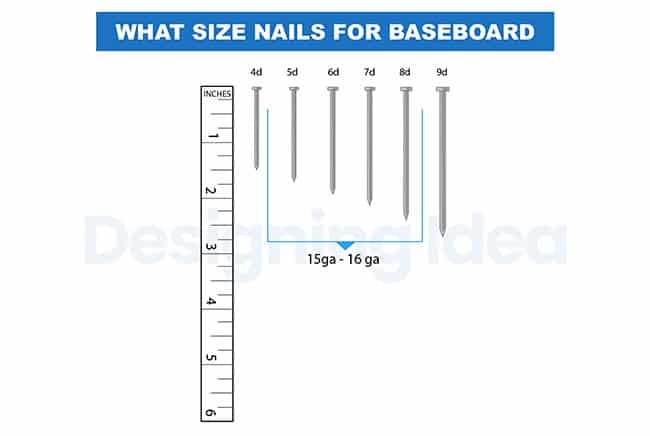
The size of nails that should be used for nailing in baseboard trim is 1 ½ inch nails. The holes for the nails should be predrilled in some materials to avoid splitting or cracking the material. Check the specific material to see the needs and warnings. These nails can be installed using a brad power nailer, or they can be installed by using a trusty ole hammer and arm power.
Painting Baseboards
A good portion of baseboards need to be painted and, over time, repainted for repairs or change of color. By painting, it gives them the ability to be pretty much any color imaginable. However, the most popular color by far is white to match other white trim around windows and crown molding.
Wood and MDF can be painted, while it may not be a great idea to paint the vinyl or rubber selections. Typically MDF is pre-primed to add strength, but if it is not, make sure to prime that surface before adding paint to it. Color options are pretty limitless when it comes to painting, which makes MDF and wood a popular choice.
Paint Grade for Baseboard
The best grade to paint baseboards is semi gloss. This type of paint is good for cleaning and has only a little bit of sheen to it so as not to call an unneeded amount of attention to it. For an even flatter look, an eggshell paint works. Eggshell paint can hide imperfections and avoid glares or shine on the trim.
How to Paint Baseboards with Carpet
First off, getting pre-painted baseboards is the easiest way to avoid getting paint on the carpet, but if you are asking this question, I assume that is not an option. Sometimes the material needs to be repainted or touched up, or maybe there is just a desire for a new look, and this is the least expensive and time consuming solution.
Painters tape and plastic can be great helpers in this situation. Taping a large sheet of plastic to the bottom of the trim (really get it in there) avoids accidental spilling or fly off from paintbrushes. I myself am notorious for overlooking or doing a bad job on this step because I want it to be done fast, but to protect the carpet, this must be done well, and there cannot be any exposed carpet, or it will get ruined.
Baseboard Ideas – Q & A
What is the difference between baseboard and trim?
Simply, baseboard is a type of trim. Trim is the overall term for any molding and millwork. The baseboard is the specific trim placed where the floor and the walls meet. The material covers the section where the wall and floor meet, while trim can cover the area where the door frame meets the wall or the wall meets the ceiling. Baseboards are just specifically at the base of the wall – hence the name.
Should shoe molding match baseboards?
While not a requirement, and typically, the shoe board is not seen very well, it is best to match the moldings as best as possible, or at least make them coordinate. An example of shoe molding is a quarter round piece, which is commonly made of the exact same material and painted the same as the rest of the base it is attached to.
Do baseboards need to match door trim?
Again, it is not a requirement that the baseboard and door trim match, and in many commercial applications, this is not the case. In homes, it is usually best to get matching door trim and baseboards to keep a cohesive look throughout the space. In situations where you are required to have a metal door frame, it is likely the trim will have to be different.
What is the best material for baseboards?
Wood is the best material for baseboards. While each of the materials has its special qualities, wood is not the cheapest of the options, but the price is worth the quality. Wood is a strong material that can take a beating, requires little maintenance, and can be easily replaced. Certain areas require other materials (wet areas and PVC), but ultimately, wood is a great choice.
Is MDF good for baseboards?
MDF is good for baseboards, it is not the best, but it is good. Wood is better than MDF, and MDF comes at quite a lower cost than wood, which can be an extremely good thing for some people. Again, there are some places where MDF is not ideal, but that is why they make PVC and rubber products as well.
What is the most popular baseboard trim?
Three inch rounded or stepped baseboard is the most common type. This style gives a little bit of design to the profile and detail without going overboard and making it overwhelming. This is great for fitting into several different style homes and is simple enough to stay at a decent price point.
What size baseboard should I use?
The baseboard size you should use is based on the size of your wall and space. Generally, with larger walls (like something 10 feet tall), it is recommended to use a 5 inch to 7 inch base.
Commercial buildings tend to use a 6 inch base. With smaller, more typical residential wall heights (8 feet tall), it is recommended to use a size of 3 inches to 5 inches – common residential is 4 inch.
If you’re hiring contractors to replace your wall trim, it’s a good idea to read the reviews of previous customers and get a service estimate from each company to compare products and replacement costs.
When they come to your home, make sure to get all of the information regarding the estimated time of completion, price of materials, and potential issues involved with the installation.
Did you find all of the information about baseboard styles and base trim that you’re looking for, or do you have any questions? Let us know if we missed any tips or materials in the comments.

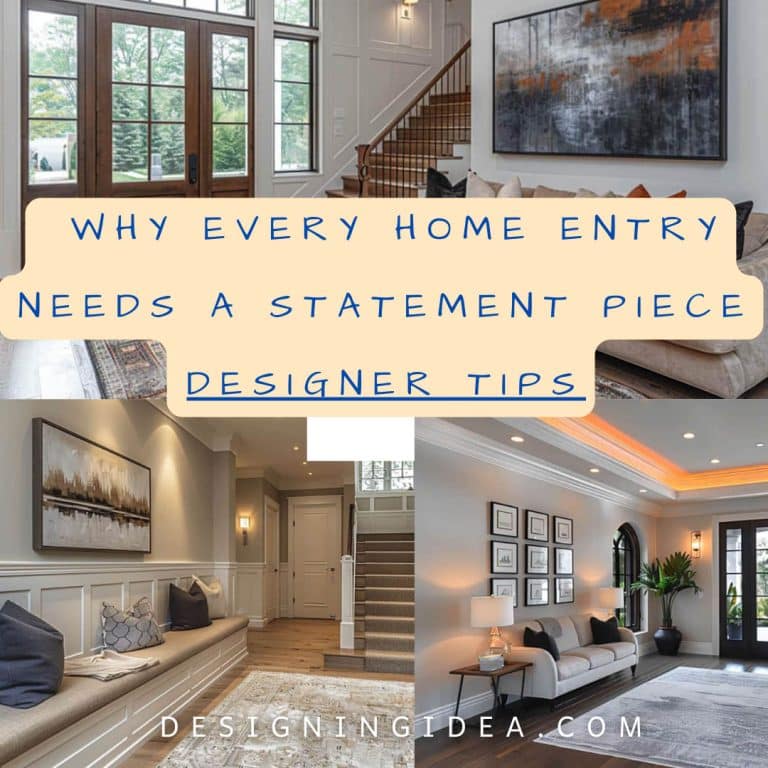
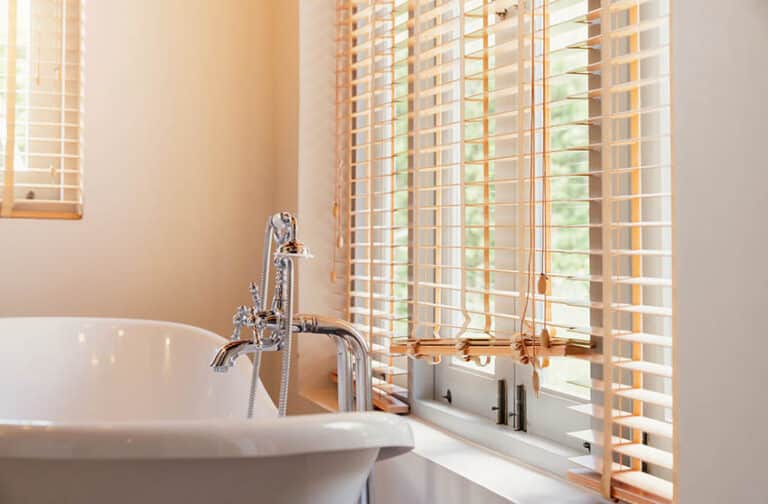
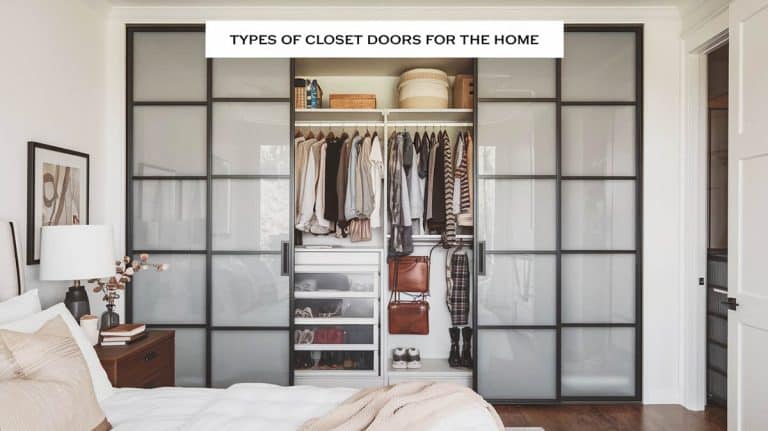
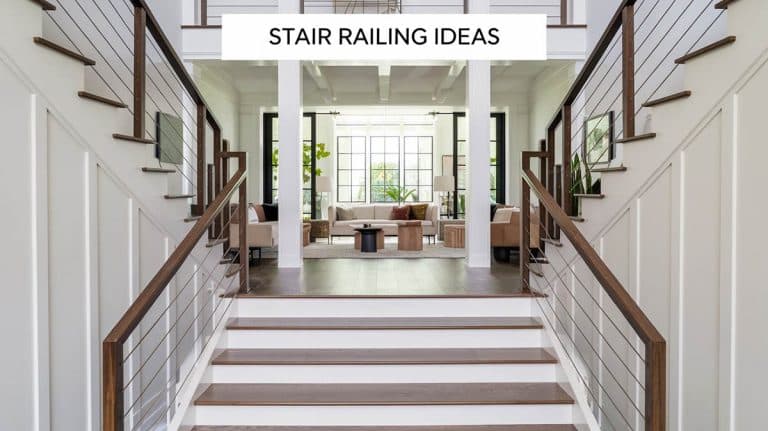
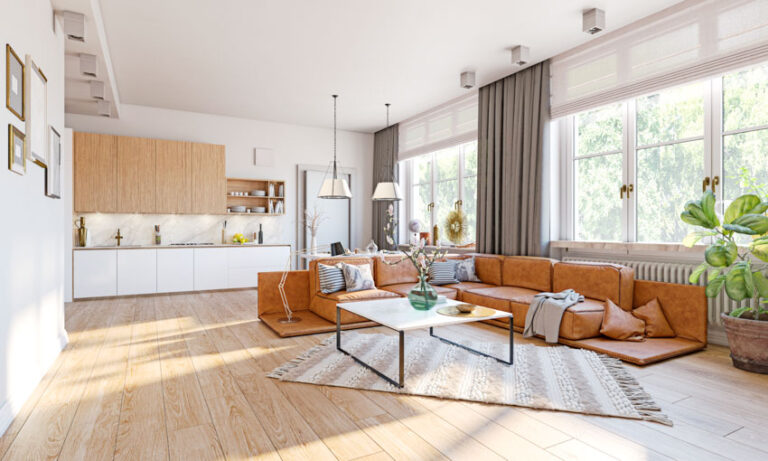
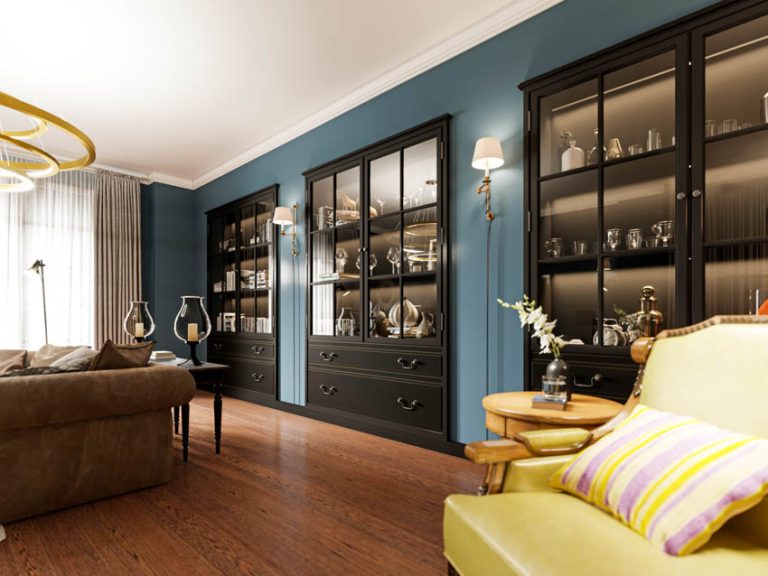
This is the most comprehensive article about the different types of baseboards i’ve seen. thank you
Great job on this, truly. Bookmarked during my trim process 🙂